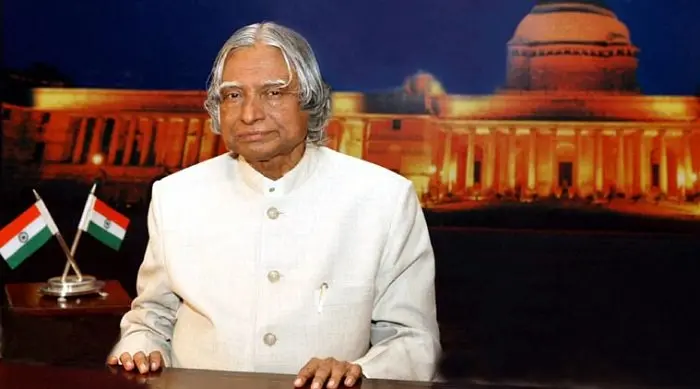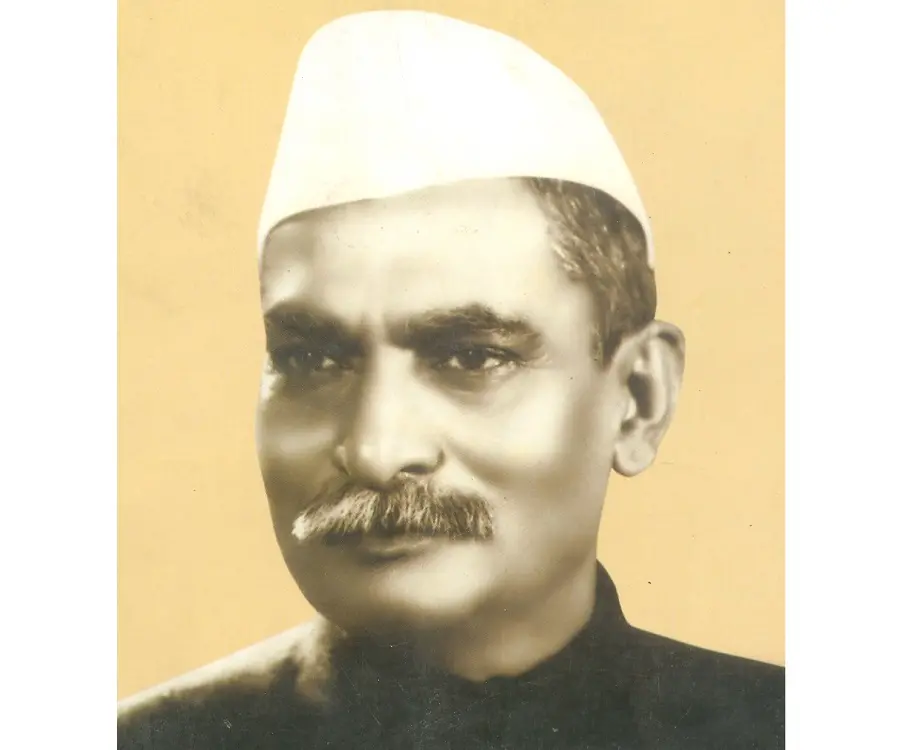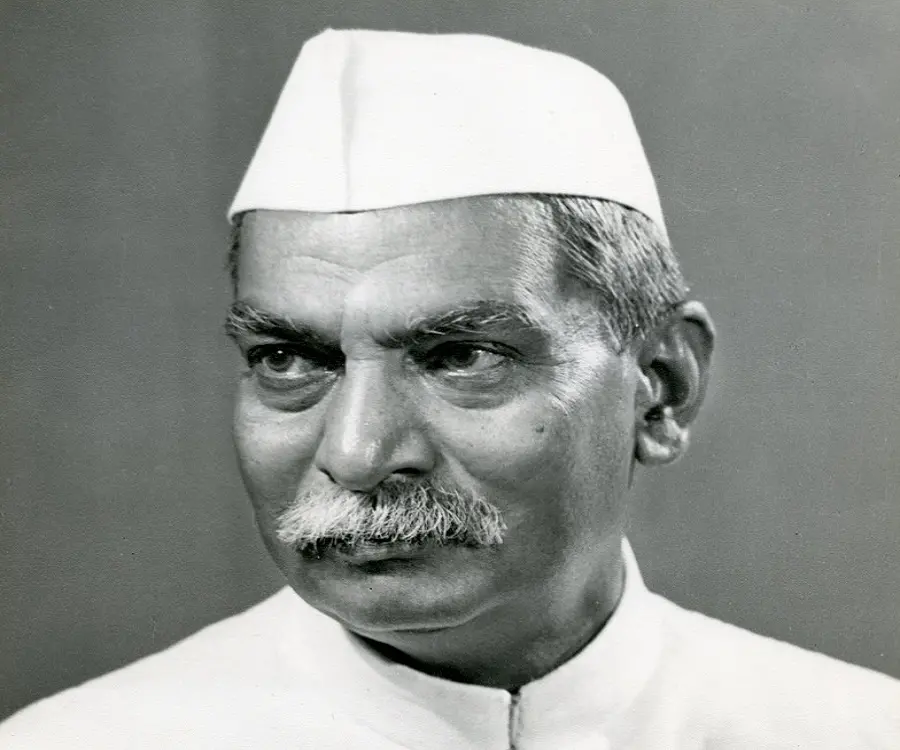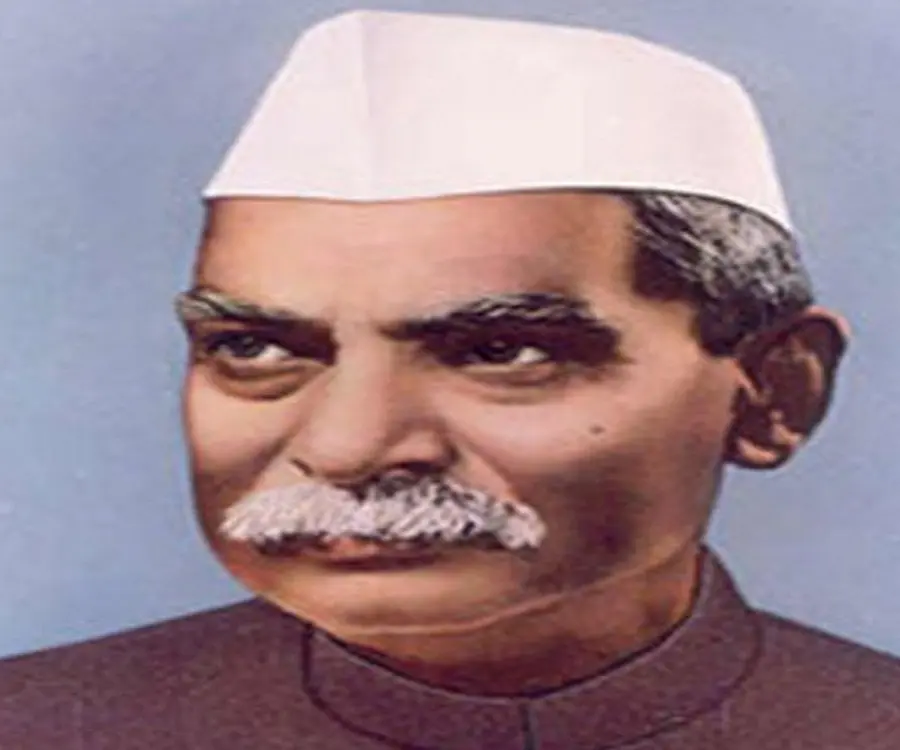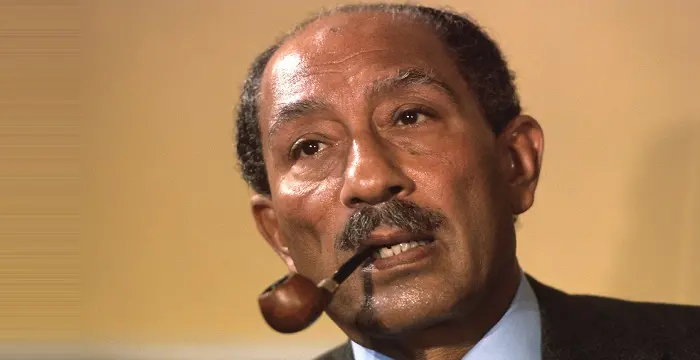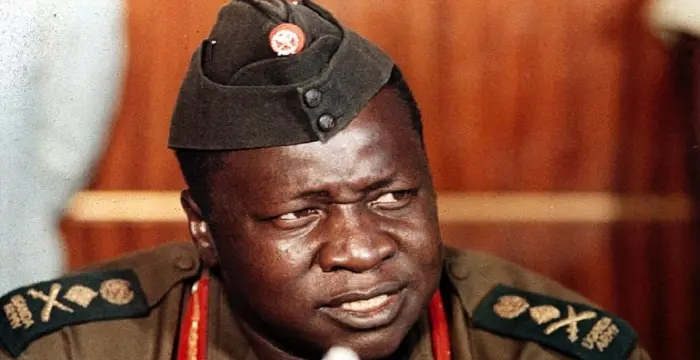
Rajendra Prasad - Former President of India, Birthday and Family
Rajendra Prasad's Personal Details
Dr Rajendra Prasad served as the first President of Independent India
| Information | Detail |
|---|---|
| Birthday | December 3, 1884 |
| Died on | February 28, 1963 |
| Nationality | Indian |
| Famous | Leaders, Political Leaders, Presidents, Former President of India |
| Spouses | Rajvanshi Devi |
| Childrens | Mrityunjaya Prasad |
| Birth Place | Ziradei, Siwan, Bihar |
| Religion | Hinduism |
| Gender | Male |
| Father | Mahadev Sahai |
| Mother | Kamleshwari Dev |
| Sun Sign | Sagittarius |
| Born in | Ziradei, Siwan, Bihar |
| Famous as | Former President of India |
| Died at Age | 78 |
// Famous Former President of India
Dr Zakir Husain
Dr Zakir Husain was the third President of Independent India. He was an educationist and was co-founder of the Jamia Milia Islamia.
Pratibha Patil
Pratibha Patil is an Indian politician who served as the 12th President of the Republic of India. Check out this biography to know about her childhood, family life, achievements and fun facts about her life.
A.P.J. Abdul Kalam
A.P.J. Abdul Kalam, the 11th President of India, is also popularly known as the Missile Man. Check out this biography to know about his childhood, family life, achievements and other facts related to his life.
Rajendra Prasad's photo
Who is Rajendra Prasad?
Dr Rajendra Prasad was the first president of independent India. His life has been truly inspiring for all Indians. A lawyer by training and an active Indian political leader, Prasad’s interest in Indian politics began as early as in 1911 when he the Indian National Congress. Despite having a contention for the Gandhian principles in the beginning, he later imbibed the true spirit of Gandhi by adopting him as his mentor, practicing self-discipline and working relentlessly in the non-cooperation movement. He toured many parts of the country, spreading the ideals and beliefs of Mahatma Gnadhi. Blessed with remarkable organisational capacity and leadership qualities, he thrice headed the Indian National Congress. When India finally gained independence from the British rule, he took over as a cabinet minister, slowly making his way to the chair of the President of the Constituent Assembly and later taking up the office of India’s President for two terms. Other than his political activities, he made several literary contributions as well. His most significant works are ‘India Divided’, ‘Satyagraha at Champaran’, ‘Atmakatha’ and ‘Since Independence’.
// Famous Political Leaders
Edi Rama
Edi Rama is the current Prime Minister of Albania. Check out this biography to know about his childhood, life, achievements, works & timeline.
Khalifa bin Zayed Al Nahyan
Sheikh Khalifa bin Zayed Al Nahyan is the current President of the United Arab Emirates (UAE). Check out this biography to know about his birthday, childhood, family life, achievements and fun facts about him.
Leo Varadkar
Cam Leo Varadkar is the current Taoiseach—the Prime Minister—of the Republic of Ireland. Check out this biography to know about his childhood, family life, achievements and other facts about his life.
Childhood & Early Life
Rajendra Prasad was born to Mahadev Sahai and Kamleshwari Devi at Zeradei, in the Siwan district of Bihar on December 3, 1884. He was the youngest kid of the family.
While his father, a scholar of Persian and Sanskrit language, was a dawning influence on young Prasad’s life and career, his mother took care of the moral upbringing, teaching him Indian mythology.
A meritorious student, he received his early education from Moulavi, an accomplished Muslim scholar, who taught him Persian, Hindi and arithmetic.
He later studied at the Chapra District School and T.K. Ghosh's Academy in Patna. For higher education, he moved to Calcutta where he secured a scholarship at the Presidency College, for a degree in science.
He later changed his stream of studies from science to arts, attaining his MA in Economics in 1907.
It was while in college that he first became acquainted with The Dawn Society and he became an active member of the same. In 1906, he played a crucial role in the formation of the Bihari Students Conference.
Completing his education, he took up the job of a professor of English at the Langat Singh College in Muzaffarpur and was soon was promoted as the principal.
In 1908, he left his chair of the principal to pursue a degree in law at the Calcutta City College, where he doubled up as a professor of Economics. In 1915, he graduated with honors with a Masters degree in Law, winning a gold medal. In 1937, he completed his Doctorate in Law from Allahabad University
Meanwhile in 1911, joined the Indian National Congress.
Career
Upon completing his legal studies, he took to working at the High Court of Bihar and Odisha in 1916. A year later, he was appointed as one of the first members of the Senate and Syndicate of the Patna University.
He, along with his volunteers, rendered support to Gandhi during his fact-finding mission in Champaran district of Bihar to address the grievances of the Indian peasants.
As soon as the Non-Cooperation Movement was passed by the Indian National Congress in 1920, he gave up on his legal career as well as his university duties to enter politics and work towards India’s freedom struggle whole-heartedly.
He actively participated in the non-cooperation movement, touring states, holding public meetings, collecting funds and inciting people for boycotting everything western - from schools, colleges to even government offices. As part of the movement, he urged people to give up on western clothes and adopt khadi.
Unlike others in the Indian Congress who misjudged Gandhiji’s suspension of the civil disobedience movement due to the violent route that it had taken, he stood by his mentor. He even replicated Gandhi’s Salt Satyagraha in Bihar for which he was imprisoned.
In 1934, he was elected the President of the Indian National Congress during the Bombay session. After the resignation of Subhash Chandra Bose as President of the INC in 1939, he again took up the responsibility. His main aim then was to mend the rift created in the Indian Congress due to the ideological differences between Bose and Gandhi.
In 1942, upon Congress’s authorization of the Quit India Movement, numerous Indian leaders were imprisoned and he was one amongst them. He stayed imprisoned at the Bankipur Central Jail for three years until his release on June 15, 1945.
After India's independence from the British-Raj, he served as one of the cabinet ministers of the Interim Government, taking charge of the Food and Agriculture Department.
In December 1946, he was elected as the President of Constituent Assembly, which was established to frame the Constitution of India.
On January 26, 1950, when the Constitution of Indian was adopted, he was elected as India’s first President. He served in the position for two terms until 1962, thus becoming the first and the only President of India to have been twice in the office.
During his role as the President of India, he adhered to the Presidential duties and acted independently of politics as expected by the President of India as per the Constitution. He played an active role in state affairs.
During his presidency, he toured numerous countries on mission of goodwill such as Japan, Ceylon, USSR, Indo-China, Malaya and Indonesia. He looked forward to establishing peaceful relations with other countries.
In 1962, after serving for twelve years as the President of India, he relinquished his duties as the President and moved to Patna where he stayed at the campus of Bihar Vidyapeeth. He spent his last years of retirement at the Sadaqat Ashram in Patna.
Awards & Achievements
For his unconditional contribution as a leader of the Indian National Congress and as the President of India, he was conferred with India’s highest civilian award - Bharat Ratna.
Personal Life & Legacy
He was married to Rajavanshi Devi at the age of twelve. The couple was blessed with a son - Mrityunjaya Prasad.
He breathed his last on February 28, 1963 at the Sadaqat Ashram in Patna.
Trivia
A Bharat Ratna recipient, he was the first President of free India and the only one to serve for two terms in the office of the President.
// Famous Presidents
Khalifa bin Zayed Al Nahyan
Sheikh Khalifa bin Zayed Al Nahyan is the current President of the United Arab Emirates (UAE). Check out this biography to know about his birthday, childhood, family life, achievements and fun facts about him.
Anwar Sadat
Anwar Sadat was the third President of Egypt and has been awarded the Nobel Prize for his peace initiatives. To know more about his childhood, career, profile and timeline read on the following biography.
Idi Amin
A Ugandan dictator, Idi Amin is remembered for his brutal regime and crime against humanity. Check this biography to know in details about his life, childhood, profile and timeline.
Rajendra Prasad's awards
| Year | Name | Award |
|---|---|---|
Other | ||
| 0 | Bharat Ratna | |
Rajendra Prasad biography timelines
- // 3rd Dec 1884Rajendra Prasad was born to Mahadev Sahai and Kamleshwari Devi at Zeradei, in the Siwan district of Bihar on December 3, 1884. He was the youngest kid of the family.
- // 1907He later changed his stream of studies from science to arts, attaining his MA in Economics in 1907.
- // 1908 To 1937In 1908, he left his chair of the principal to pursue a degree in law at the Calcutta City College, where he doubled up as a professor of Economics. In 1915, he graduated with honors with a Masters degree in Law, winning a gold medal. In 1937, he completed his Doctorate in Law from Allahabad University
- // 1911Meanwhile in 1911, joined the Indian National Congress.
- // 1916Upon completing his legal studies, he took to working at the High Court of Bihar and Odisha in 1916. A year later, he was appointed as one of the first members of the Senate and Syndicate of the Patna University.
- // 1920As soon as the Non-Cooperation Movement was passed by the Indian National Congress in 1920, he gave up on his legal career as well as his university duties to enter politics and work towards India’s freedom struggle whole-heartedly.
- // 1934 To 1939In 1934, he was elected the President of the Indian National Congress during the Bombay session. After the resignation of Subhash Chandra Bose as President of the INC in 1939, he again took up the responsibility. His main aim then was to mend the rift created in the Indian Congress due to the ideological differences between Bose and Gandhi.
- // 1942 To 15th Jun 1945In 1942, upon Congress’s authorization of the Quit India Movement, numerous Indian leaders were imprisoned and he was one amongst them. He stayed imprisoned at the Bankipur Central Jail for three years until his release on June 15, 1945.
- // Dec 1946In December 1946, he was elected as the President of Constituent Assembly, which was established to frame the Constitution of India.
- // 26th Jan 1950 To 1962On January 26, 1950, when the Constitution of Indian was adopted, he was elected as India’s first President. He served in the position for two terms until 1962, thus becoming the first and the only President of India to have been twice in the office.
- // 1962In 1962, after serving for twelve years as the President of India, he relinquished his duties as the President and moved to Patna where he stayed at the campus of Bihar Vidyapeeth. He spent his last years of retirement at the Sadaqat Ashram in Patna.
- // 28th Feb 1963He breathed his last on February 28, 1963 at the Sadaqat Ashram in Patna.
// Famous Leaders
Edi Rama
Edi Rama is the current Prime Minister of Albania. Check out this biography to know about his childhood, life, achievements, works & timeline.
Tecumseh
Tecumseh was a Native American leader of the Shawnee clan. This biography profiles his childhood, life and timeline.
Khalifa bin Zayed Al Nahyan
Sheikh Khalifa bin Zayed Al Nahyan is the current President of the United Arab Emirates (UAE). Check out this biography to know about his birthday, childhood, family life, achievements and fun facts about him.
Anwar Sadat
Anwar Sadat was the third President of Egypt and has been awarded the Nobel Prize for his peace initiatives. To know more about his childhood, career, profile and timeline read on the following biography.
Leo Varadkar
Cam Leo Varadkar is the current Taoiseach—the Prime Minister—of the Republic of Ireland. Check out this biography to know about his childhood, family life, achievements and other facts about his life.
Swami Vivekananda
Swami Vivekananda was the chief disciple of Sri Ramakrishna, and was responsible for awakening India spiritually. Check this biography to know in detail about his life, profile and timeline.
Rajendra Prasad's FAQ
What is Rajendra Prasad birthday?
Rajendra Prasad was born at 1884-12-03
When was Rajendra Prasad died?
Rajendra Prasad was died at 1963-02-28
Where was Rajendra Prasad died?
Rajendra Prasad was died in Patna, Bihar
Which age was Rajendra Prasad died?
Rajendra Prasad was died at age 78
Where is Rajendra Prasad's birth place?
Rajendra Prasad was born in Ziradei, Siwan, Bihar
What is Rajendra Prasad nationalities?
Rajendra Prasad's nationalities is Indian
Who is Rajendra Prasad spouses?
Rajendra Prasad's spouses is Rajvanshi Devi
Who is Rajendra Prasad childrens?
Rajendra Prasad's childrens is Mrityunjaya Prasad
What is Rajendra Prasad's religion?
Rajendra Prasad's religion is Hinduism
Who is Rajendra Prasad's father?
Rajendra Prasad's father is Mahadev Sahai
Who is Rajendra Prasad's mother?
Rajendra Prasad's mother is Kamleshwari Dev
What is Rajendra Prasad's sun sign?
Rajendra Prasad is Sagittarius
How famous is Rajendra Prasad?
Rajendra Prasad is famouse as Former President of India


